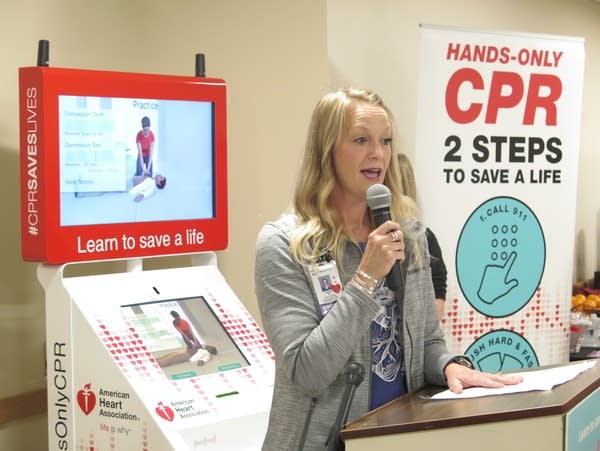A new approach to saving lives: Kiosk teaches hands-only form of CPR

Alicia Bravo, an emergency room nurse at Hennepin Healthcare in Minneapolis, speaks Friday about her experience going into cardiac arrest and being saved by CPR. She spoke as the hospital unveiled a new "hands-only" CPR training machine.
Peter Cox | MPR News
Go Deeper.
Create an account or log in to save stories.
Like this?
Thanks for liking this story! We have added it to a list of your favorite stories.


